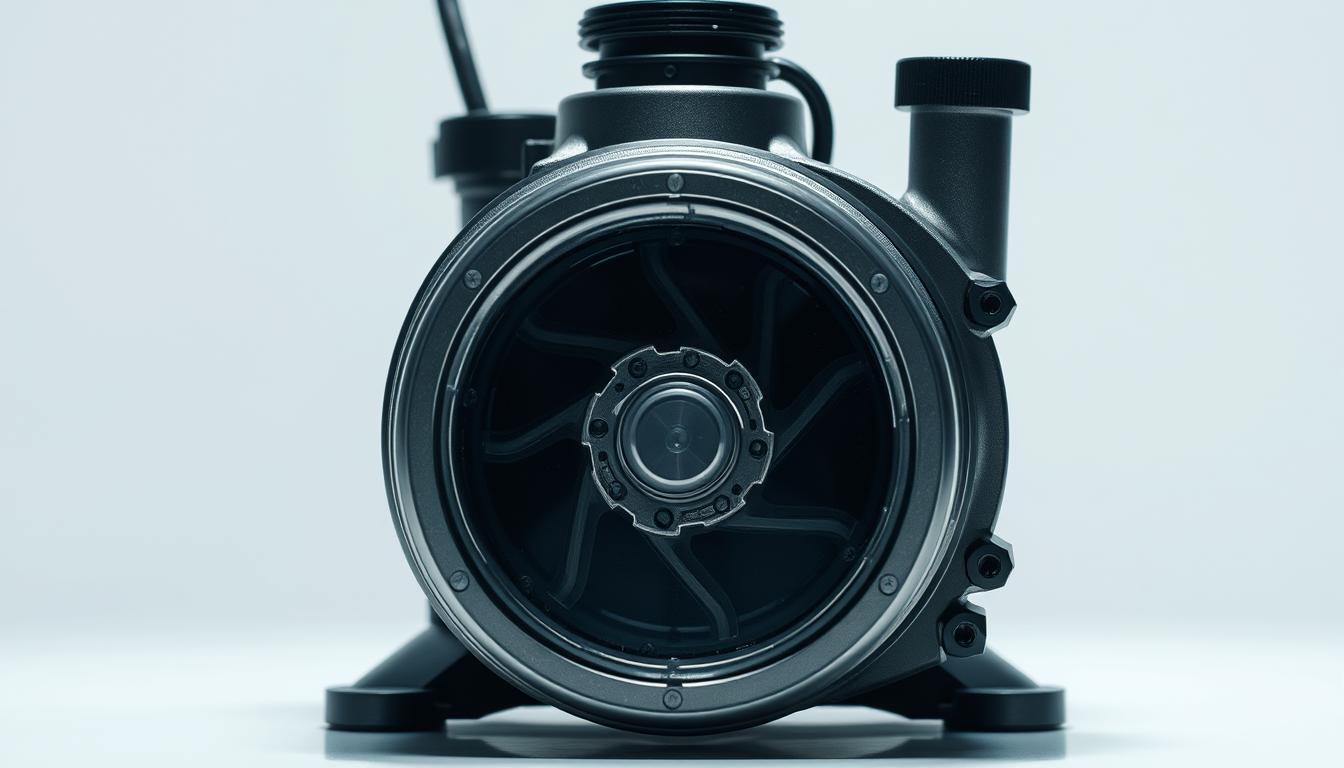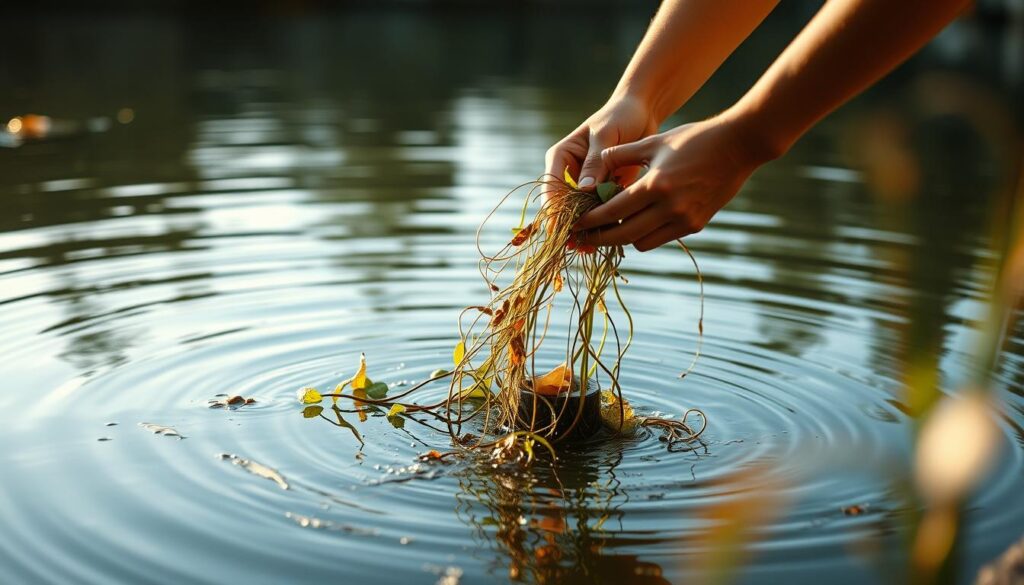
This guide helps U.S. backyard owners identify common issues and restore steady water flow without rushing to replace equipment.
Start with simple checks: confirm power is reaching the outlet, inspect GFCI protection, and avoid long extension cords that cause voltage drop. Low water or clogged intakes often stop circulation. Many problems trace to interrupted power, blocked plumbing, or a stuck impeller.
Next, the guide moves from basic to hands-on steps. You will learn safe practices like powering down before handling gear and using surge protection. Then you’ll test flow by rinsing lines, removing the unit to inspect the impeller, and seeing if the motor runs outside the water.
Preventive care keeps systems working longer: seasonal cleaning, monitoring water chemistry, and protecting electronics from outages. When you see noisy bearings, cracked housings, or worn seals, the text will show when service or part replacement is needed.
Key Takeaways
- Begin with power and outlet checks, including GFCI and surge protection.
- Confirm adequate water level to prevent vapor lock and overheating.
- Clear intake screens and flush plumbing before deeper disassembly.
- Perform safe hands-on tests: remove the unit and inspect the impeller.
- Use simple maintenance to extend equipment life and avoid premature replacement.
Understand your water feature and safety first
First, learn the signs of a healthy water feature so you can spot problems early. A steady, even return and smooth water flow across the surface show normal operation. Look for an unbroken stream at the spillway, even skimmer draw, and clear circulation with minimal splashing.

What “normal” flow looks like
Normal: consistent waterfall or stream, quiet operation, no sputtering at the spillway.
Abnormal: weak falls, sporadic surges, gurgling from air intake, or debris collecting near the intake.
Safety checklist
- GFCI-protected outlet: use one to prevent ground faults.
- Verify cords and connectors are rated for wet locations and have intact jackets.
- Create drip loops and place the equipment on a stable base to reduce sediment ingestion.
- Power down at the breaker or GFCI before lifting a submersible unit and make sure the outlet is off by testing with a lamp on the same circuit.
- Check garden lines and tubing regularly for kinks, collapsed hoses, and leaves.
Tip: document baseline flow and sound when the system is healthy. That record makes deviations easier to spot and helps extend equipment life.
Power supply checks that fix many pond pump problems
A dead unit often points to a simple electrical interruption rather than a mechanical failure. Start by confirming the interruption power supply at the outlet, then work back to the service panel.

Confirm GFCI, breakers, and fuses
Verify the GFCI is reset and test the outlet with a lamp or meter. Check breakers and fuses in the service panel to rule out a tripped circuit or blown fuse.
Avoid long extension cords and voltage drops
Do not rely on long or undersized cords. Voltage drops reduce torque, raise winding heat, and cut motor life. Inspect the plug and cord for cuts or corrosion and replace damaged items.
Outages and weather: surge protection and UPS
Add a quality surge protector to absorb spikes during storms. Consider a UPS sized for the amp draw so the unit rides through brief outages and keeps water moving.
“Start at the source: test the outlet, reset GFCI, and inspect breakers before disassembly.”
- Confirm nameplate voltage matches the outlet and circuit capacity.
- Use wet-location rated connectors and weatherproof covers for every outdoor connection.
- If breakers trip repeatedly, unplug other devices and test the pump alone to find the fault.
Restore water flow by removing debris and correcting water levels
Clear blocked intakes and refill low water to get circulation moving again. Start by removing leaves, algae, and particles from screens and skimmer baskets. A clean intake immediately improves water flow and reduces strain on the motor.

Clean the intake screen and skimmer
Remove debris from the intake screen and skimmer basket, then rinse the intake cover and any pre-filter sponge. Fine particles can quietly restrict circulation, so take time to flush them out.
Make sure the unit is fully submerged
Low levels let air into the intake and cause vapor lock, which can stall the impeller and overheat the motor. Make sure water levels in both the main water body and skimmer vault are adequate, especially during hot, dry spells.
- Disconnect plumbing to let lines drain back and clear hidden obstructions before restarting.
- Inspect nearby areas for leaf build-up that may be drawn into the intake; elevate the unit on a stand if needed.
- After cleaning, run the system and monitor for 10–15 minutes to confirm steady output and normal operation.
If clogs recur, consider adding a larger pre-filter or improving upstream filtration to keep debris away from the unit. Log cleaning dates to help set the right maintenance schedule and keep water flow consistent.
Flush the plumbing so your pump isn’t fighting hidden blockages
Flushing the line clears hidden buildups that silently choke performance. Disconnect the system so the plumbing can drain. This makes it easier to push clean water through and remove algae, sludge, and trapped debris that reduce flow.
Disconnect, drain, and hose-through tubing to clear sludge, algae, and kinks
Power down and open the union or loosen the hose clamp at the outlet, then let the line empty. Run a garden hose from the discharge end back toward the supply to force out sediment.
For stubborn buildup, use a pond-safe cleaning solution and a flexible brush to scrub inside long runs and fittings. Inspect for kinks, crushed sections, or sags where debris collects and replace compromised tubing.
- Check barbs and valves for partial blockages that starve pumps and cause noise.
- Clean check valves and flappers so they open freely and do not cut output.
- Reassemble with tight clamps, remove air pockets by priming the line, and verify there are no leaks.
- After restoring, listen and watch for smoother operation as evidence of improved supply and flow.
Tip: Schedule periodic flushing after heavy leaf fall or algae blooms so hidden restrictions don’t erode performance over time. Consider upsizing tubing or simplifying bends if restrictions recur.
Hands-on diagnostics: remove pump from pond and inspect the impeller
A hands-on check of the rotating assembly often identifies common flow problems. Unplug the unit and lift it from the handle or body—never pull the cord. Place the unit on a dry bench to work safely.
Open the housing and look into the volute. Remove grit, twigs, or scale that can jam the impeller. Check the impeller for chips, shaft play, or swollen bushings.
- Safe removal: shut off power, then remove pump pond unit by lifting correctly to avoid cord damage.
- Visual check: open the volute and clear debris; inspect the impeller and shaft for wear or grooves.
- Bench test: lay the unit on its side, apply brief power, and confirm the impeller spins and the motor starts.
- Stuck rotor: if the impeller won’t turn, you might need to gently nudge it with a screwdriver, then retest.
Listen for grinding or humming without rotation; those sounds help tell mechanical binding from electrical faults. Re-seat seals and O-rings carefully, then bleed air by tilting the unit under water so the pump operates smoothly after reinstalling.
Physical damage and wear: when pond pump repair means replacing parts
Physical wear shows up in small ways: hairline cracks in housings, flattened gaskets, or corroded metal that lets moisture reach electrical connections.
Inspect cable entries and seals for rust or wicking. Brittle O-rings and compressed gaskets often cause persistent leaks. These small piece parts matter for long-term life and safe operation.
What to check and replace
- Examine the exterior housing for pinholes or fractures that breach waterproofing and invite shorts.
- Check electrical connections and cable glands for corrosion; reseal or replace any that fail to keep water out.
- Inspect rotating parts: worn impeller blades, shaft play, and noisy bearings reduce flow and equipment life.
- Source genuine manufacturers replacement kits to ensure correct tolerances and material compatibility.
- After each change, run a bucket test to confirm no leaks and verify quiet, smooth operation.
Tip: swap one component at a time to isolate improvements and log part numbers and service dates so future supply needs are clear.
Prevent problems: maintenance that extends pump life and performance
Plan seasonal tasks now so equipment life and performance improve over the long term.
Seasonal steps: in hot weather, top off to counter evaporation and add shade or aeration to keep water cool. In fall, use netting and skimming to remove leaves before they clog intakes. In freezing climates, remove, drain, and store the unit indoors to avoid ice damage.
Monitor water quality and filtration
Regular checks of pH, ammonia, nitrite, and nitrate cut organic load and reduce clogging. Clean intake screens, skimmers, filters, and tubing on a schedule so flow stays steady.
Follow manufacturer specifications
Verify flow, head height, and hose size match the maker’s specs so the pond pump and related pumps are not overworked. Place equipment on a stable base to limit sediment intake and extend service life.
- Create a maintenance calendar and adjust over time based on debris and algae.
- Quick weekly visual checks in garden features save time and reduce problems.
- Keep spare pre-filters and gaskets on hand and track runtime hours for planned service.
Conclusion
Conclude with a quick systems check: verify power integrity, clear intake debris, and confirm full submersion so the unit runs without air lock.
Start with GFCI, breakers, and fuses and avoid long cords that cause voltage drops. Flush plumbing, remove debris from skimmers, and make sure water levels support steady water flow.
If flow problems persist, remove pump and bench-test the impeller. You might need to gently nudge a stuck rotor; if the unit only runs after manual help, plan for part replacement with genuine manufacturers pieces.
Protect electronics with surge protection or a UPS and track service time. With routine care, most pumps and pond systems deliver reliable performance and longer life for your water feature.








